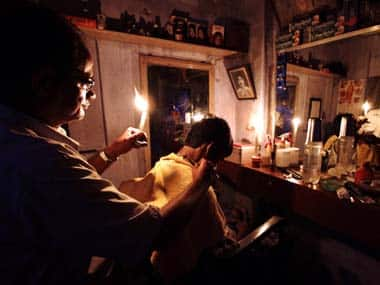With power tariffs witnessing a 65 percent hike in just the last two years and both BJP and AAP projecting it as a major issue, the ruling Congress in Delhi may have to face the brunt of people’s anger over it in the December 4 electoral battle. BJP and Arvind Kejriwal’s Aam Admi Party, which have been attacking the Congress government over the issue, have promised to cut power tariff sby by 30 percent and 50 percent respectively if they come to power. People from all sections, poor and rich alike, admitted that the “high” power tariff has been affecting their monthly budget and it will be on their minds along with other issues while they exercise their franchise. Though consumers were more or less of the view that electricity supply had witnessed improvement, they felt “inflated” power bills remained a major concern. [caption id=“attachment_1233397” align=“alignleft” width=“380”]  Associated Press[/caption] The power tariff in the city was hiked by 22 percent in 2011 followed by five per cent hike in February last year. The tariff was hiked by up to two percent in May last year and by a further 26 percent for domestic consumers in July last year. The tariff was hiked by up to three percent in February and again by five percent in July. Following the five percent hike by the Delhi Electricity Regulatory Commission, the Delhi government had announced a subsidy for those limiting their monthly consumption to 400 units. “No doubt our monthly budget has been hit big time due to inflated power bills. We are now finding it difficult to save money for children’s education,” said Dinesh Kumar, a resident in Janakpuri. Kumar’s anger was echoed by Rakesh Gupta, an employee in a multinational bank, who resides in Jungpura. " We are really having a difficult time as prices of vegetables and essential commodities have also gone up substantially," he said. Alleging collusion between the Delhi government and private power distribution companies, the BJP has been asking Chief Minister Sheila Dikshit why her government restrained the Delhi Electricity Regulatory Commission from announcing an almost 25 percent tariff cut in May 2010 In an unusual move, the Delhi government had forced the DERC not to announce the new tariff order, allegedly because it was under pressure from the three distribution companies which had complained that their demand for increasing the power tariff had not been considered by the regulator while finalising the new tariff structure. The DERC, which was making last minute preparations to announce the new tariff for the year 2010-11, had indicated that it had planned to cut down the tariff by 20 to 25 per cent as discoms would have had a surplus of around Rs 4,000 crore if the existing tariff was not changed. For a section of people staying in rented accommodations, the problem is more serious as they said landlords often charge them exorbitantly. Bansi Lal, President of the Residents Welfare Association Saket, said the problem of higher tariff hit tenants the most, as they are not being provided individual metres by their landlords. The BJP tried to corner the government by organising a series of ‘Bijli rallies’ in August. The party has already announced that if voted to power it will reduce the electricity tariff by 30 percent. The Aam Aadmi Party, too, has held umpteen number of rallies and protests, including refusal to pay power bills and restarting connections snapped by authorities, even at ‘galli-mohalla’ level. They have also demanded that electricity rates be reduced by at least 23 percent. However, the Congress government has time and again accused both the BJP and Congress of “misleading” people on the issue, claiming that Delhi is getting cheapest power among all metro cities. Rebutting AAP and BJP’s allegation, the Delhi Government said that the privatisation of the power sector in Delhi has been very successful and it has resulted in a saving of around Rs 30,000 crore by the city government over the last ten years. The distribution companies maintain that the tariff hike was necessitated because the production cost has increased several folds, mainly because the cost of procuring power has gone up. “We do not produce power, we purchase power from generating companies which are government owned, there are central government owned companied like NTPC, NHPC or Satluj Vidyut Nigam or state controlled Rajghat or Indraprastha or Bawana. “Now, when you look at these generating stations, they were supplying at an average cost of one rupee 52 paisa (in 2002). Today they are supplying at an average rate of about Five rupees 45 paisa. “So the increase is about 270 per cent. And the increase in tariff that has taken place in the last 10 years to the consumer, the increase has been from 70-75 per cent to about 100-120 per cent,” said Praveer Sinha, chairman Tata Power Delhi Distribution Limited. PTI
With power tariffs witnessing a 65 percent hike in just the last two years and both BJP and AAP projecting it as a major issue, the ruling Congress in Delhi may have to face the brunt of people’s anger over it in the December 4 electoral battle. BJP and Arvind Kejriwal’s Aam Admi Party, which have been attacking the Congress government over the issue, have promised to cut power tariff sby by 30 percent and 50 percent respectively if they come to power.
Advertisement
End of Article
Written by FP Archives
see more


)
)
)
)
)
)
)
)
)



